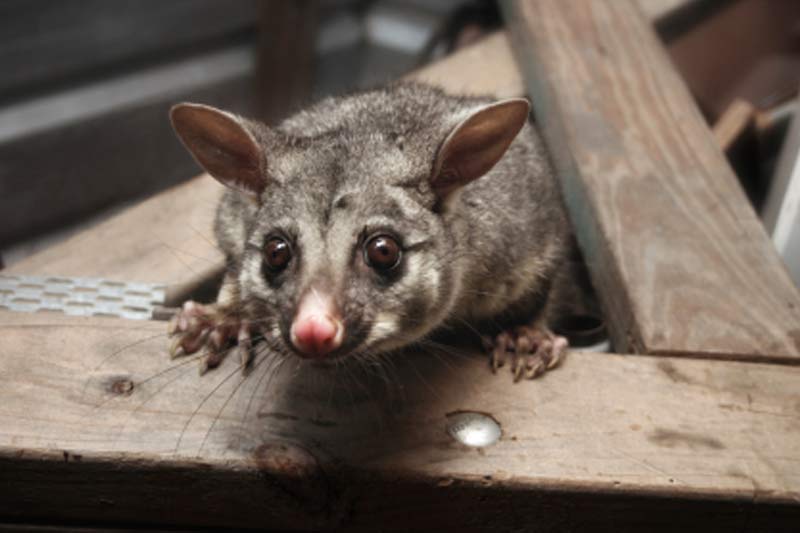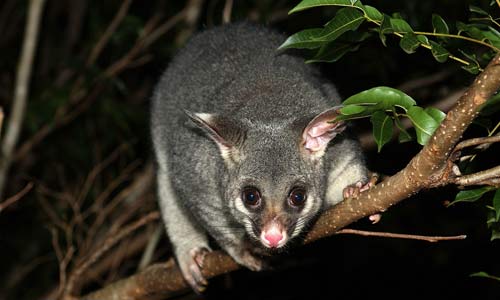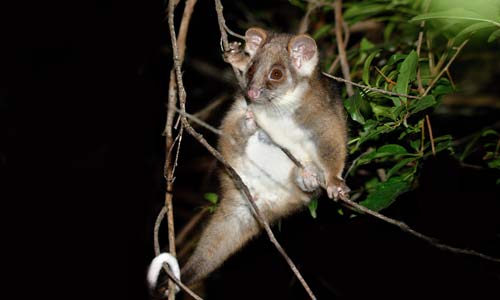Possums
Possums are a part of Australian life. These cute marsupials are active at night, have become well-adapted to urban environments, and can cause problems for homeowners without proper possum pest control by making noise in the roof or eating flowers. There are 23 different possum species found in Australia and are a beautiful part of our native fauna. The most common two seen in urban areas are the Common Brushtail Possum and the Common Ringtail Possum.
Possums can be a nuisance when they invade your property, causing damage to your garden or creating a mess. Flick Pest Control offers effective and humane possum pest control services to help you get rid of these unwanted guests. With our specialised techniques, you can rest assured that the possums will be safely relocated away from your home. Don’t let possums wreak havoc on your property, contact Flick Pest Control for reliable and efficient possum pest control solutions.
By working with professionals like Flick Pest Control, individuals and communities can effectively control and manage possum populations to ensure the safety and well-being of both humans and animals.

Commercial Pest Solutions
Integrated Possum Solutions
It is essential for businesses to prioritise the health and safety of their employees and customers. Possums not only pose a health risk but also damage property and reputation. Flick’s professional commercial pest control services provide tailored solutions to prevent and eliminate any pest infestations, ensuring a clean and hygienic environment for everyone. Our regular inspections and treatments help to maintain a pest-free workplace and protect your business from potential pest related damage. Trusting in Flick’s commercial pest control solutions is a smart investment in the long-term success and reputation of any business.
Common Possum Questions
Where do possums live?
Most possums live in trees. However, due to urban development, there has been a significant loss of their natural habitat. This has driven possums to take up residence in cavities inside and in between buildings and in roof voids.
When are possums active?
Possums are nocturnal creatures, which is why the pattering of feet keeps homeowners awake at night! Their nighttime activity may also extend to scouring through waste and compost bins in search of food, creating a mess for you to uncover in the morning!
Are possums considered a pest?
Possums can be troublesome in that they may feed on vegetables, fruit, flowers and new plants. Male brushtail possums make loud, screeching calls in their quest for a mate and can emit a strong smell. Dogs may bark incessantly at possums, and they can crawl into roof spaces and potentially get trapped or dislodge roof tiles. This can open your home up to secondary damage during a downpour.
How do I know if I have a possum problem?
Signs of a possum problem include unusual noises coming from the roof cavity, such as scampering or the pattering of tiny feet. Damaged plants and seedlings and stains on the ceiling inside the house. You may also smell a strange odour.
Do I need professional possum relocation services?
Possums are a protected species in Australia, so those who kill or harm them face the prospect of paying heavy fines. Flick Pest Control can remove possums and return them to their natural habitat. We will first inspect the home to identify all entry points, then seal them with materials designed to possum-proof. Temporary one-way doors can be installed so possums cannot re-enter once they exit, and cages set up to trap the animals and remove them.
Common Possum Species

Brushtail Possum
Apppearance
The brushtail possum is large with a bushy tail and pointy ear. Silvery grey with a black band across the snout, adults weigh from 1.5-4kg.
Lifestyle
Brushtail possums are marsupials, with a single baby born in autumn or spring. The baby possum spends around six months in the pouch, and then 1-2 months riding on its mother’s back until it is weaned and leave the den at between 7 – 16 months old.
Habits
Common Brushtail possums live in wooded areas along Australia’s east coast, in eastern South Australia and south-west Western Australia. They have adapted to living with humans and are often encountered in suburban backyards, campgrounds and ceilings. They communicate by sound and scent, with sharp hisses and coughs common.

Ringtail Possum
Apppearance
About half the size of the Brushtail possum, Ringtail possums have round ears, a grey back and a curled tail with a white tip.
Lifestyle
Ringtail Possums are very social little creatures and are found in Queensland, New South Wales, Victoria, South Australia and Tasmania. They are often seen in the evenings in gardens and running along power lines and may inhabit the walls of houses. They are nocturnal and eat a variety of fruits and flowers.
Habits
The Common Ringtail Possum have one to three young, mostly twins, born during autumn or winter. Ringtail possums usually build a nest of twigs and leaves, called a drey, several metres above the ground. They do not enter house roofs as frequently as the Brushtail.
I found Possums! Help!
Don't worry, we're here to help. Follow these steps to stay safe until help arrives!
Call a Professional
Call Flick Pest Control Immediately.
If you encounter possums in your home or business, you may be dealing with an infestation. Don’t wait until the problem gets out of hand – we can help protect your property and ensure the health and safety of those around you. Fill out the form below or call 1300 270 019 today.
Leave the Possums Alone
Trust Flick Pest Control to handle the situation
Our pest control technicians have the knowledge, experience, and tools necessary to effectively and safely eliminate pests from your home or business. Attempting to treat possums on your own can be risky and may not fully eradicate the problem.
We will and ensure a safe and effective outcome for your property.
There May be More!
Don’t Go Looking Around!
Flick’s pest control experts will perform a thorough inspection of the property to identify any areas where possums may be present, followed by the development of a treatment plan tailored to the specific needs of the situation. By implementing effective pest control strategies, we can help ensure a pest-free environment for you.
